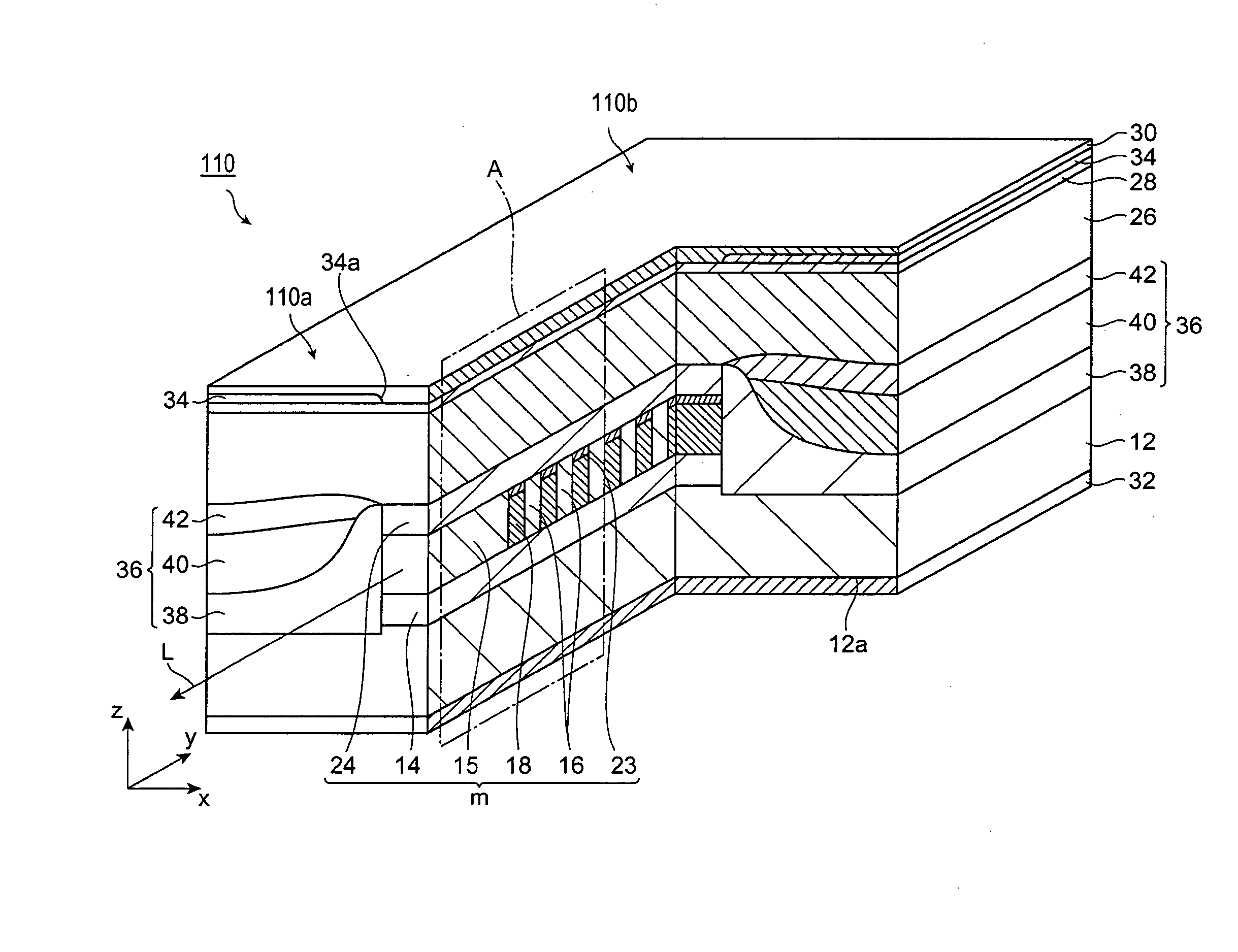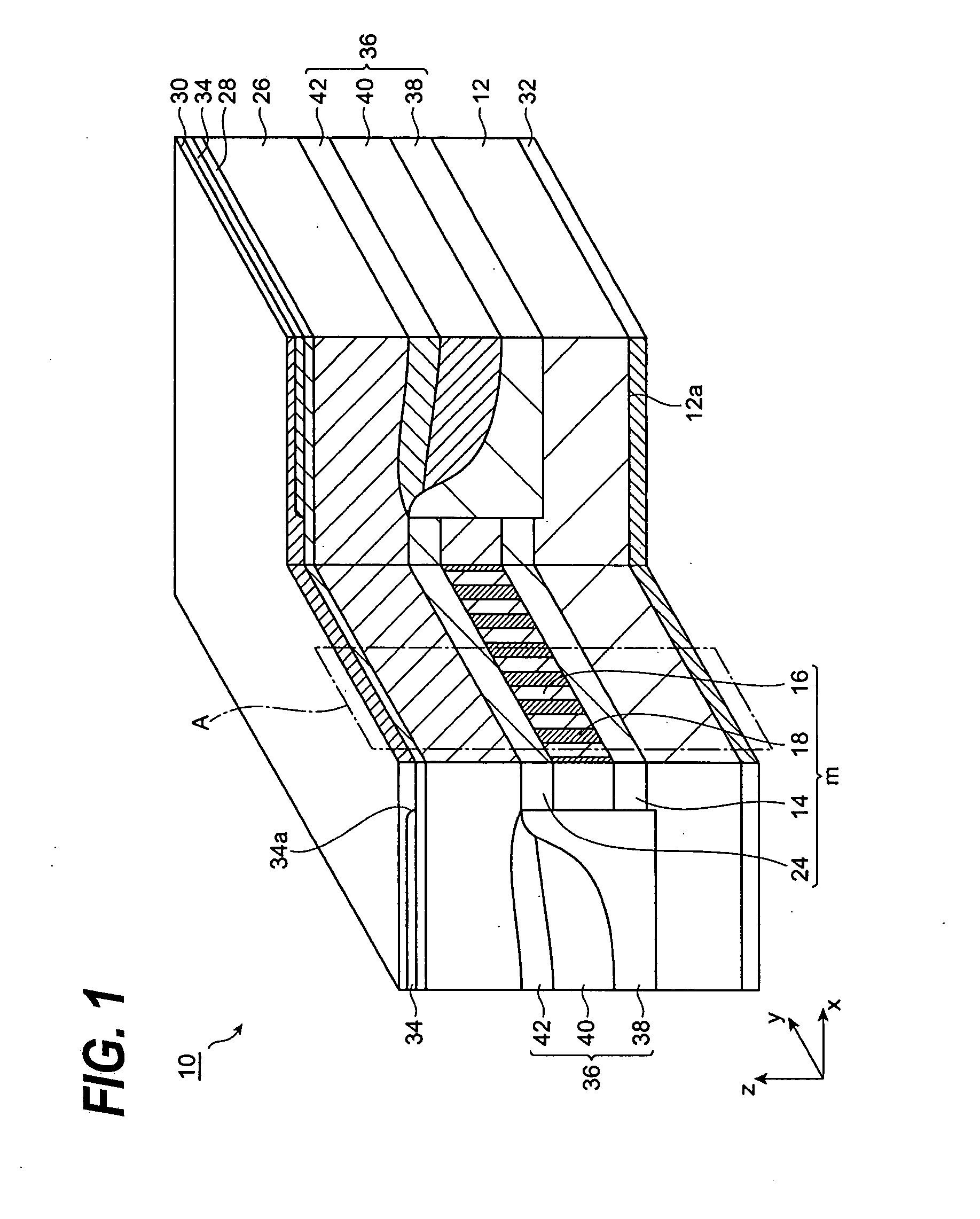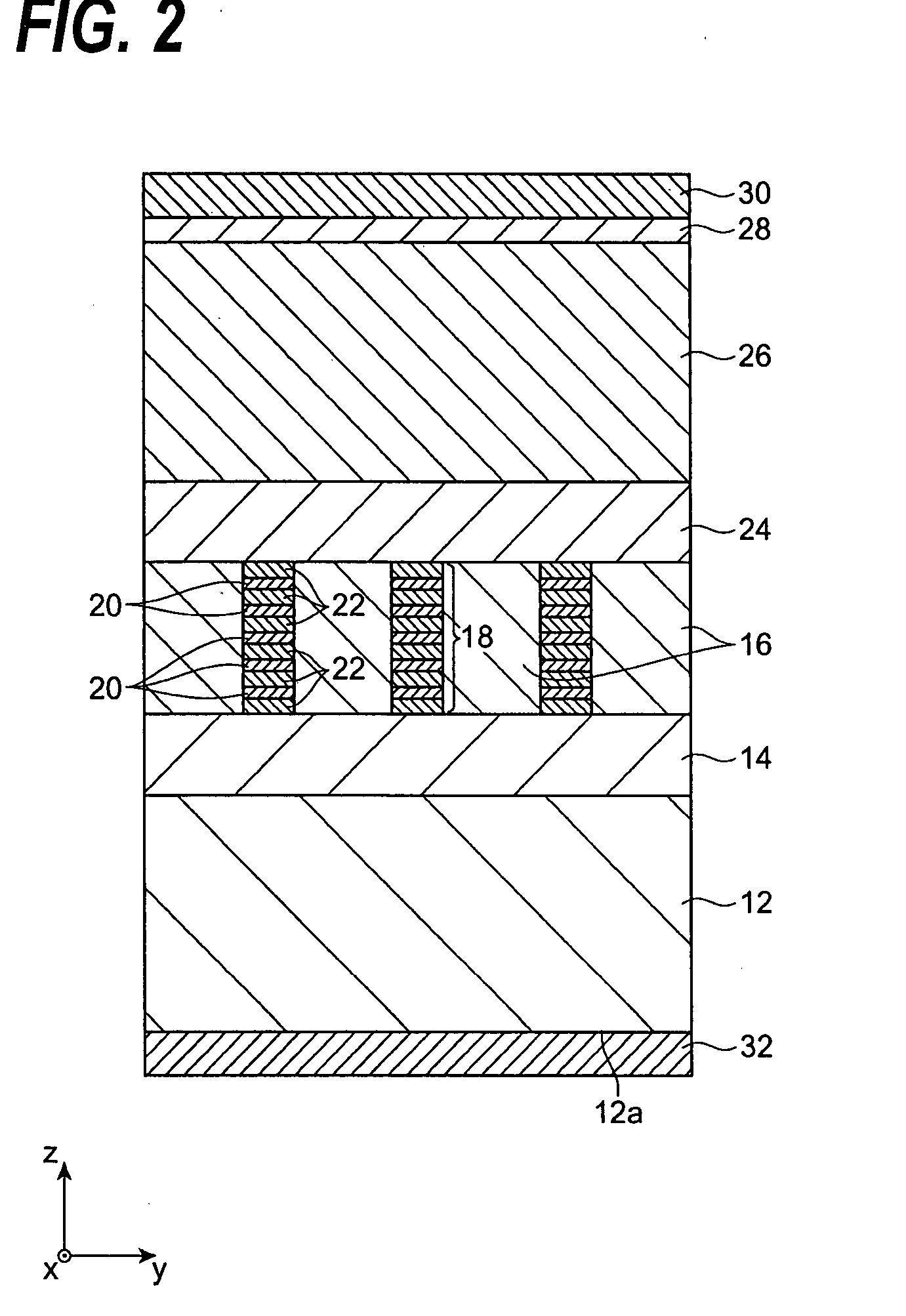Method for manufacturing a light-emitting device with a periodic structure in an active region
- Summary
- Abstract
- Description
- Claims
- Application Information
AI Technical Summary
Benefits of technology
Problems solved by technology
Method used
Image
Examples
second embodiment
[0031] FIGS. from 3 to 7 schematically show processes for manufacturing the light-emitting device shown in FIG. 1. Next, respective processes shown in FIGS. from 3 to 7 will be described.
[0032] Growth of Group III-V Compound Semiconductor Layers)
[0033] First, a group III-V compound semiconductor layer 16a is grown on the substrate 12. The substrate 12 provides with the lower cladding layer. The lower optical confinement layer 14 may be grown, if necessary, on the substrate 12 prior to the growth of the semiconductor layer 16a. The MOVPE (Metal-Organic Vapor Phase Epitaxy) method may grow the layer 16a and the lower optical confinement layer 14. The growth temperature of these layers may be 650° C.
[0035] Next, an etching mask M is formed on the semiconductor layer 16, as shown in FIG. 4. The mask M may be made of silicon oxides and patterned with the lithography technique. For instance, a stacked semiconductor layers of the substrate 12, the lower con...
third embodiment
[0053] A light-emitting device according 110 to third embodiment of the invention provides an active region that includes AlGaInAs and an additional layer 23 made of group III-V compound semiconductor material between the active region 18 and the optical confinement layer 24 to prevent the oxidization of aluminum (Al) contained within the active region. The additional layer 23, involved within the mesa structure m, may be i-GaInAsP. The active region 18 may includes well layers and barrier layers each comprised of i-AlGaInAs but different compositions to each other; or the active region may include i-AlGaInAs layers for the well layer 20, while i-GaInAsP layers for the barrier layer 22. Because the device 110 provides the additional layer 23 to prevent the oxidization of the AlGaInAs layer included within the active region 18, the device may enhance the reliability as well as the performance thereof.
[0054] The light-emitting device 110 may further provide a window region 15 in an e...
fourth embodiment
[0059] Next, a fourth embodiment of the light-emitting device according to the present invention will be described. FIG. 11 is a side cross section of the light-emitting device 120 of the fourth embodiment, which is a type of distributed feedback (DFB) laser diode.
[0060] The device 120 that emits light along the y-axis includes, similar to the previous embodiments, the substrate 12 made of a group III-V compound semiconductor material, two optical confinement layers, 14 and 24, semiconductor regions 16, the active regions 18, the additional layer 23 to prevent the oxidization of the active region 18, the semiconductor layer 26 that functions as the cladding layer, the contact layer 28 and two electrodes, 30 and 32.
[0061] The device 120 also provides the window region 15 in the end portion 120a thereof from which the laser light 100L emits. On the other hand, the other end portion 120b provides a distributed Bragg reflector (DBR) 17 to reflect light 100L. The DBR 17 may omit the co...
PUM
 Login to View More
Login to View More Abstract
Description
Claims
Application Information
 Login to View More
Login to View More - R&D
- Intellectual Property
- Life Sciences
- Materials
- Tech Scout
- Unparalleled Data Quality
- Higher Quality Content
- 60% Fewer Hallucinations
Browse by: Latest US Patents, China's latest patents, Technical Efficacy Thesaurus, Application Domain, Technology Topic, Popular Technical Reports.
© 2025 PatSnap. All rights reserved.Legal|Privacy policy|Modern Slavery Act Transparency Statement|Sitemap|About US| Contact US: help@patsnap.com



